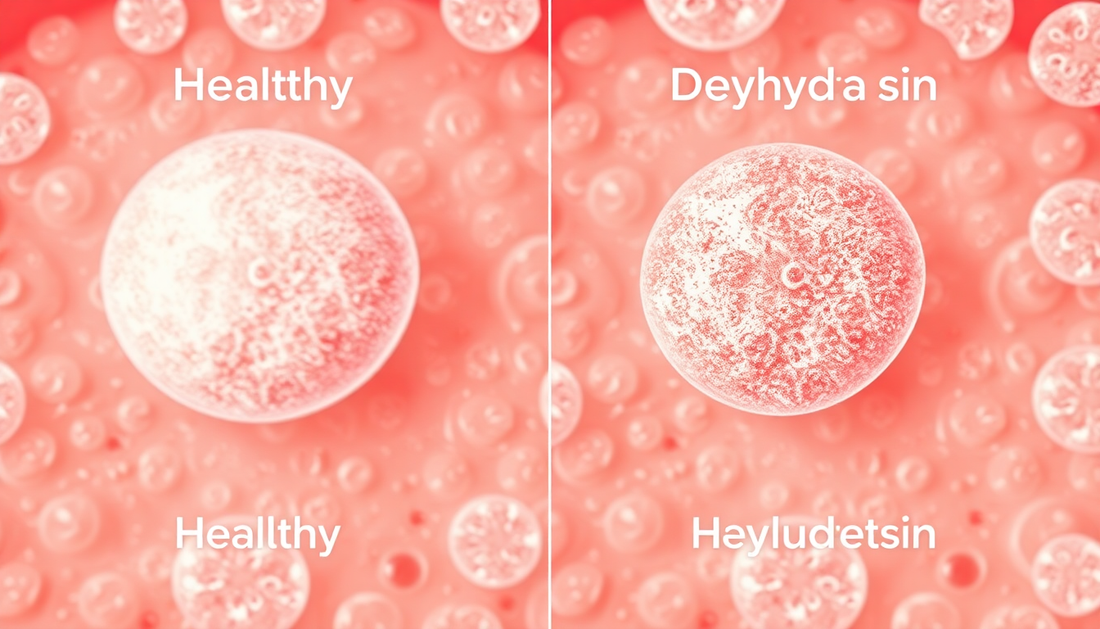
The Real Difference Between Dry and Dehydrated Skin (And What To Do)
Share
Maintaining healthy, glowing skin is a top priority for many of us, but it can be challenging to determine the root cause of common skin concerns. Two of the most prevalent skin types are dry skin and dehydrated skin, and understanding the key differences between the two is crucial for developing an effective skincare routine.
Introduction
Skin hydration is a complex and multifaceted aspect of skin health. While some may use the terms "dry" and "dehydrated" interchangeably, they actually refer to distinct skin conditions that require different treatment approaches. In this blog post, we'll dive deep into the defining characteristics of dry and dehydrated skin, explore how to identify your skin type, and uncover the best strategies for restoring and maintaining optimal skin hydration.
Defining Dry and Dehydrated Skin
Dry skin and dehydrated skin may share some similar symptoms, but they have fundamental differences in their underlying causes and manifestations. Let's take a closer look at each:
Dry Skin
Dry skin is a skin type that is characterized by a lack of natural oils or sebum production. This results in a tight, rough, and flaky complexion, often accompanied by visible fine lines and wrinkles. Dry skin is typically genetic or can be exacerbated by environmental factors, such as harsh weather conditions, frequent use of drying skincare products, or underlying medical conditions.
Dehydrated Skin
Dehydrated skin, on the other hand, is a skin condition that is caused by a lack of water in the skin's outer layer, the stratum corneum. This can be due to a variety of factors, including environmental stressors, excessive use of alcohol-based products, or even dehydration from within the body. Dehydrated skin often appears dull, tight, and may experience increased sensitivity and irritation.
The key difference between dry and dehydrated skin is that dry skin is a skin type, while dehydrated skin is a skin condition that can affect any skin type, including oily and combination skin.
How to Identify Your Skin Type
Determining whether your skin is dry or dehydrated can be tricky, as the symptoms can sometimes overlap. Here are some telltale signs to help you identify your skin type:
Signs of Dry Skin
- Rough, flaky, or scaly texture
- Visible fine lines and wrinkles
- Tightness or discomfort after cleansing
- Dull, lackluster complexion
- Increased sensitivity to certain products
Signs of Dehydrated Skin
- Dull, sallow appearance
- Increased sensitivity and irritation
- Visible fine lines and wrinkles
- Tight, uncomfortable feeling after cleansing
- Increased oil production (as the skin tries to compensate for lack of hydration)
If you're still unsure, try the "pinch test" – gently pinch the skin on your cheek. If the skin doesn't snap back quickly, it's a sign of dehydration. If the skin feels tight and lacks elasticity, it's likely dry.
Moisture Barrier and Skin Health
The skin's moisture barrier plays a crucial role in maintaining optimal skin hydration and overall skin health. This protective layer is composed of lipids, ceramides, and natural oils that help retain moisture and shield the skin from environmental stressors.
When the moisture barrier is compromised, either due to dry skin or dehydration, it can lead to a host of skin concerns, including increased sensitivity, inflammation, and even accelerated signs of aging. Repairing and strengthening the moisture barrier is essential for restoring skin's natural balance and resilience.
Skincare Solutions
Addressing dry and dehydrated skin requires a tailored approach to your specific skin needs. Here are some key ingredients and tips to consider:
For Dry Skin
- Hydrating, non-stripping cleansers
- Nourishing, occlusive moisturizers containing ingredients like shea butter, ceramides, and plant-based oils
- Exfoliating with gentle, creamy scrubs or chemical exfoliants to remove flaky skin
- Incorporating face oils or serums to replenish lipids
For Dehydrated Skin
- Hydrating, water-based cleansers and toners
- Humectant-rich moisturizers containing ingredients like hyaluronic acid, glycerin, and aloe vera
- Facial mists or essences to boost hydration throughout the day
- Avoiding alcohol-based products that can further strip the skin
Regardless of your skin type, a consistent, gentle skincare routine focused on restoring and maintaining the moisture barrier is key to achieving healthy, radiant skin.
Treatment and Prevention
In addition to a tailored skincare regimen, there are several lifestyle factors that can impact skin hydration and overall skin health. Staying hydrated by drinking plenty of water, limiting exposure to harsh environmental conditions, and incorporating nourishing, omega-rich foods into your diet can all contribute to maintaining a healthy, glowing complexion.
By understanding the unique characteristics of dry and dehydrated skin, and implementing the right skincare solutions, you can take control of your skin's hydration levels and achieve the luminous, resilient skin you've been seeking.
Conclusion
Navigating the differences between dry and dehydrated skin can be a challenge, but with the right knowledge and approach, you can unlock the key to healthier, more radiant skin. Remember, skin hydration is a multifaceted issue, and a personalized skincare routine tailored to your specific needs is the best way to achieve long-lasting, beautiful results.
